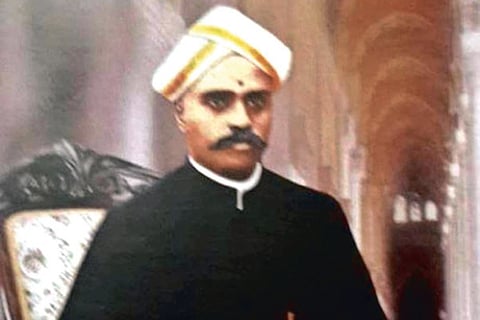

Chennai
“I had always great hopes for Madras, and still I have the firm belief that from Madras will come the spiritual wave that will deluge India,” so wrote Vivekananda from the United States to an ardent disciple in Madras — a doctor.
Much of Swami Vivekananda’s thoughts in those crucial days are today preserved in archives of his letters to Dr Nanjunda Rao of Mylapore. Vivekananda himself had dined in the doctor’s residence while arranging for his Chicago trip. Rao was one of the first disciples of Vivekananda and played a great role in establishing a mutt in Chennai in the name of his guru’s master Sri Ramakrishna Paramahamsa.
From a struggling student who had migrated to Madras, Mysore-born Maharashtrian Rao became a prosperous doctor in spite of his liberal free diagnosis to the deserving. Though born in a family of limited resources, his father being in the employ of the Mysore Maharaja, his brilliance in studies was soon noted and a royal scholarship guided him through college and medical studies. His family moved to Madras to support him.
Starting his practice in the historic Kutcheri Road (Kutcheri meaning court/ police station in Persian) he became very popular amongst the locals and the Englishmen.
He most probably used native medicines in conjunction with allopathy that he had learnt. Soon there were feelers from Mysore asking him to take up the prestigious court physician post. It must have been a temptation for anyone else whose father was such a minor official in court, but Rao was clear. Madras, it was to be. For more than medical reasons. Madras was becoming a magnet that was attracting the new-found nationalism and awakening spirituality and he wanted to be a part of it.
A medical practitioner would often be known for the succour he provides to the infirm and disabled. But, Rao was known for much more than that. Nationalism, spirituality and more than that. Opening up his space Sasi Vilas as a meeting point for many like-minded individuals thus inadvertently triggered off many events.
Why Sasi Vilas anyone would ask. One theory says he found an idol of a goddess he identified as Sasi (possibly a version of the moon) on the beach. However, Sasi Vilas was most probably named after Ramakrishnananda — a follower of the Paramahansa who was born as Shashi Bhushan Chakravarty and spread the word of Vivekananda in Madras.
The now-demolished red coloured Gothic-style building (with a view to the Kapali temple) like which he built several others as well, resembling the government architecture served as a clinic, house and meeting spot and has so much of history to it contributed by its residents and visitors. The house cooled by the breeze from the temple pond made it a pleasant place to stay. The Buckingham Canal was a few hundred metres to the backyard, just a couple of decades old and vigorously thrusting into Mylapore migrants, culture, money and learning. And nationalism too.
Very few residences have been so intertwined with the local history of Madras. The doctor encouraged visitors. Some stayed for longer durations in the cottage in the rear of his house, like Jiddu Krishnamurti, most possibly when his father was running litigation on his possession with the mighty Annie Besant. Poetess Sarojini
Devi Chattopadhyay married Govindarajulu Naidu in this house, becoming the very popular Sarojini Naidu — the Nightingale of India. Most nationalist visitors to Madras stayed at the doctor’s house and that included well-knowns like Bipin Chandra Pal and Bal Gangadhar Tilak. Leaders from Madras like Subramania Bharathi or VVS Iyer would drop in for long winding debates.
Due to the sensitive issue of the safety of those who helped him flee, there are different versions of Bharathi escaping from British India, but a very acknowledged version is of him escaping by boat on the newly built Buckingham canal after being lodged in Dr Rao’s house overnight. Rao would sponsor music concerts held in the courtyard of the house much before the Sabha’s became a dominant force in running music. Though he had a large family, food cooked in the house was for several more. On average, more than 50 people sat for a meal. It included residents, guests and even orphans.
Rao was a doctor who used to even take his stethoscope and many pills in his pockets during his morning walks for patients who accosted him on the way, perhaps too sick or poor to come and wait in the clinic.
While on a house visit to Komalees-waranpet he saw a lady seemingly mentally deranged but in her, he saw an inner halo. Sakkarai Amma became his guru and he would revere her. He would even build a temple tomb for her on the sands of the Thiruvanmiyur beach. As per his wish, he too is buried there. A bust of Dr Rao can be seen in that temple close to Kalakshetra.
— The writer is a historian andan author (With inputs from Ashok Nanjunda Rao)
Visit news.dtnext.in to explore our interactive epaper!
Download the DT Next app for more exciting features!
Click here for iOS
Click here for Android